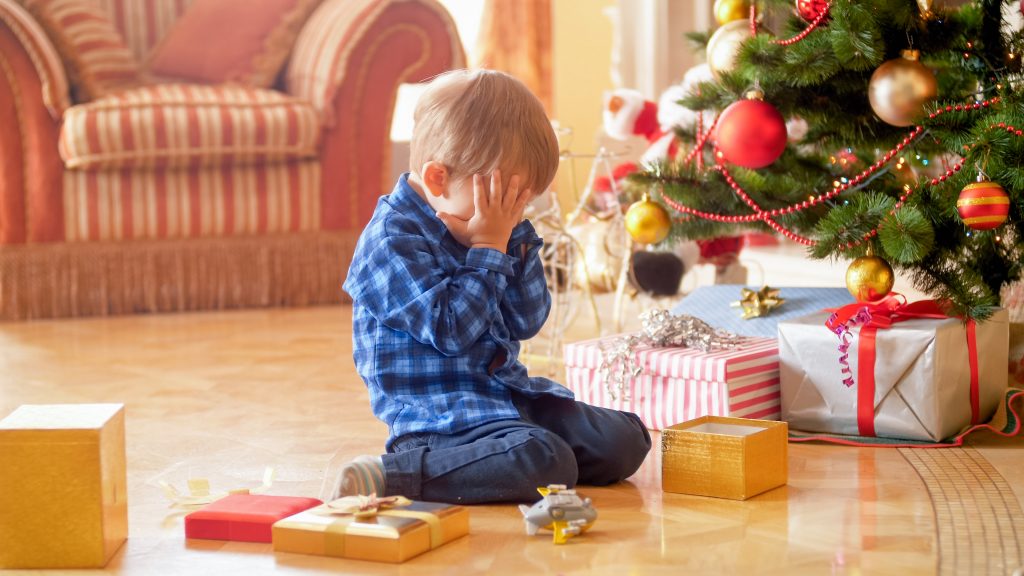“Role play is actually a great way to play together and build skills. Sharing moments that are kind of contrived allow children to bring their whole selves to the table in front of you and then allows you to help coach them through,” says Maryam Abdullah, a developmental psychologist and Parenting Program Director at the Greater Good Science Center.
Like a lot of skills, grace takes practice. And with kids, practice doesn’t always make perfect, but it helps. Maryam walked us through a gift-receiving role-playing activity that you can try in the lead up to a holiday or birthday.
Gift Receiving Role Play Game

Step 1: Invite your child to collect the mail with you.
- Explain to your child that some gifts from family may come in the mail this year since we can’t gather together.
Step 2: Share the role play game.
- You can say something along the lines of, “Let’s pretend that [insert family member] sent you a gift today for [insert holiday]. And let’s think of three things that could possibly be.”
- Maryam says this is where parents can get playful by suggesting gifts like a dinosaur, pet rock, or even a slightly browning banana.
Step 3: Ask your child what they would think about receiving any one of the gifts.
- Try to turn the focus onto the gifter. You can do this by talking about your child’s special relationship with them and why they may have picked out a particular present. This will help your child think about the thought behind the gift rather than the gift itself.
Step 4: Ask your child how they would feel about receiving any one of the gifts.
- Talking about how something makes us feel helps us better understand and manage our emotions. This practice will especially come in handy in unpredictable real-life situations.
- If your child isn’t feeling so gracious about their pretend gifts, use it as an opportunity to discuss the importance of empathy. Talk about the way their words may make the gifter feel. Then, practice positive things your child can say after they receive a gift they may not have wanted.
Step 5: Ask your child what they would say to the gifter after receiving any one of the gifts.
- In addition to saying “thank you” to the gifter, your child can show genuine gratitude by sharing how receiving the gift made them feel. By doing this, your child will both experience and express gratitude.
- Since many families won’t be together in person this year, Maryam suggests kids share gratitude via video chat or with a personalized thank you card, drawing, or poem.
Along with role play, you can also help your child by involving them in your gifting process. This way they can experience the excitement of finding a gift and understand the thought that goes into it. And as always, one of the best ways to help your children practice and express gratitude is to lead by example! You got this.
Maryam Abdullah, Ph.D. is the Parenting Program Director of the Greater Good Science Center. She is a developmental psychologist with expertise in parent-child relationships and children’s development of prosocial behaviors. If you want more parenting tips, check out the Greater Good Magazine!
